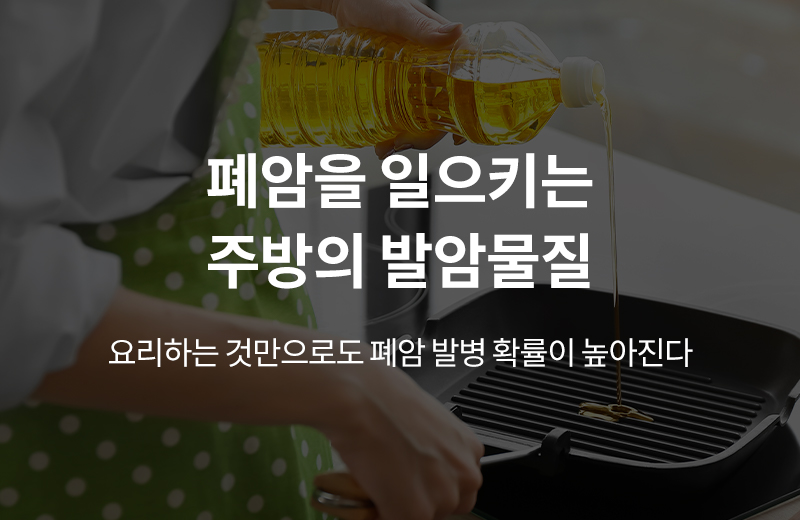
The dangers of gas stoves
Lung cancer is the deadliest cancer with the highest mortality rate among cancers. It is well known that smoking is the main cause of lung cancer. In fact, out of about 25,000 lung cancer cases that occur each year, about 70% of male lung cancer patients are considered smokers. What is surprising is that 87.5% of female lung cancer patients, or nearly 90%, were non-smokers. Why do women get lung cancer even though they didn't smoke?
The reason for this is the kitchen culture led by the gas stove. When you use a gas stove, you emit a variety of toxic gases and fine dust, the most dangerous of which is carbon monoxide. Carbon monoxide is a toxic substance that can cause human death within 5~10 minutes even if it contains only 0.5% in the air. When we breathe in carbon monoxide, it sticks to hemoglobin. Hemoglobin is responsible for transporting oxygen, which makes it difficult to supply the necessary oxygen to each organ in the body.
So why does a gas stove emit carbon monoxide? The main components of general city gas are methane and methane gas. When methane is burned, carbon dioxide is released when there is enough oxygen, but conversely, carbon monoxide is released when there is not enough oxygen. You might think it's okay to have oxygen in the air you breathe, but methane gas consumes the oxygen around it and eventually produces carbon monoxide.
Toxic substances emitted from gas stoves also include nitrogen dioxide. Nitrogen dioxide is a constant concern when it comes to air quality management in the country, and it has a very negative effect on our respiratory system. When you use a gas stove, it generates high heat between 800~1,300°C. This heat induces a chemical reaction between the surrounding oxygen and nitrogen, which first produces nitric oxide and then converts it into nitrogen dioxide in an instant.
So if you're in front of a stove, you're constantly inhaling carbon monoxide and nitrogen dioxide. Even using KF94 masks while cooking is not free from carbon monoxide and nitrogen dioxide.
Why is the microwave unsafe
So, are non-gas stoves safe for electric stoves? Usually, when you think of an electric stove, you use a highlight or an induction stove. The highlight here is that up to 700°C is a typical product. The temperature of the pot or pan on top of it can rise to more than 200°C, and depending on the metal material, it can be close to 300°C. The same goes for induction. The actual grill doesn't look hot, but the temperature of the container is generally 200~300°C.
If you're cooking stir-fry or deep-frying dishes that require heat, you'll probably use cooking oil. Cooking oil has a concept called a smoke point. The heat breaks down the tissues and the new compounds are released as smoke, and the typical smoke point is around 180°C. If you can see the smoke from the cooking oil beyond the smoke point, it means that a huge amount of compounds are being produced. However, just because you can't see the smoke from cooking oil doesn't mean the compounds aren't emitted.
Especially when cooking, not only cooking oil, but also other foods are heated together, and in the process, the moisture in the food releases more harmful substances than it would normally emit. In environmental science, this is called fine particulate matter or ultrafine particulate matter. When these substances are inhaled, most of them are not filtered out by the bronchi and end up in the lungs. After all, as long as you apply heat, it's not safe for harmful substances.
Cooking methods to prevent cancer
First, we recommend boiling it in water instead of heating it with oil. Even if you eat meat, there are far fewer harmful substances emitted when it is boiled than when it is grilled. This is because the water starts to boil at 100°C and the temperature no longer rises.
Second, if you need to use heat, it's a good idea to increase the intensity slowly. It is recommended to cook at a low temperature and gradually increase the heat to intensity.
Third, be sure to ventilate the room when cooking. When you start cooking, it's best to open the window all the way through first, and if you're only halfway open, you should ventilate the room for at least 10 minutes. Diligent ventilation minimizes the chances of you and your family members breathing in harmful substances.




